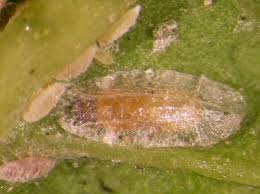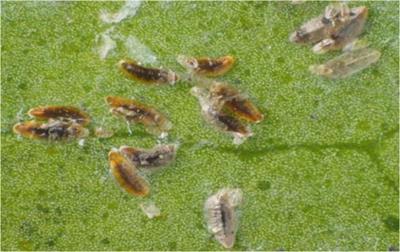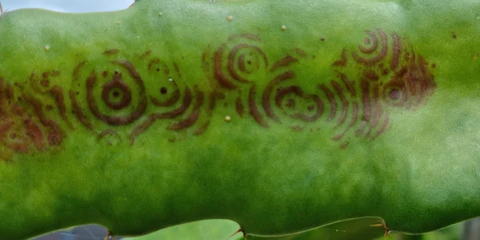Dragon fruit, with its exotic allure and succulent delights, stands as a botanical marvel. However, a adversary, scale insect disease. In this exploration, we delve into the intricacies of this affliction, deciphering its enigmatic causes and subtle symptoms that can compromise the vitality of our beloved dragon fruit plants.
Table of Contents

Scale insects in detail:
The Stealthy Invaders
Scale insects—these minute sap-sucking arthropods—operate with a level of stealth that belies their diminutive size. Their inconspicuous appearance, often cloaked in protective waxy armour, makes them adept at infiltrating dragon fruit plants unnoticed. Once settled, they employ needle-like mouthparts to tap into the plant’s sap, initiating a process that can spell trouble for the entire ecosystem.
Varieties of Scale Insects
Within the realm of scale insects, there exists a nuanced diversity. Two predominant categories, the armoured scales and soft scales, each boasting distinctive characteristics, contribute to the intricate tapestry of this pest family. The spectrum of colours and camouflaging strategies among these pests adds a layer of complexity to their identification.

Causes of Scale Insect Disease in Dragon Fruit
Environmental Factors
Dragon fruit, thriving in diverse climates, becomes susceptible to scale insect infestation under certain environmental conditions. Elevated temperatures, humidity, and inadequate ventilation create an ideal haven for these pests. Within this climatic sweet spot, scale insects find the conditions conducive to rapid reproduction and infestation.
Poor Cultural Practices
Neglecting fundamental cultural practices in dragon fruit cultivation becomes an inadvertent invitation for scale insects. Lack of regular inspection and improper pruning provide breeding grounds for these pests. The absence of vigilance in removing infested plant parts only serves to amplify the scale of the insect population, leading to a cascade of issues.

Symptoms of Scale Insect Disease in Dragon Fruit
Wilting and Reduced vigour
One of the initial telltale signs of scale insect infestation is the gradual wilting of the dragon fruit plant. The pests, extracting sap and vital nutrients, compromise the plant’s ability to maintain turgor pressure. Consequently, the once-vibrant and erect stems exhibit a noticeable decline in vigour.
Yellowing of Leaves
As the scale insects continue their insidious feast on the dragon fruit plant, the foliage bears the brunt of their assault. Yellowing leaves, a classic symptom of sap-sucking pests, signify a compromised photosynthetic process. The plant, deprived of essential chlorophyll, succumbs to a gradual deterioration.
Honeydew and Sooty Mould
The feeding habits of scale insects result in the secretion of honeydew, a sweet and sticky substance. This not only attracts ants but also serves as a substrate for the growth of sooty mould. The black, powdery coating on leaves and stems is a testament to the intricate ecological imbalances triggered by scale insect infestations.

Mitigating Scale Insect Disease in Dragon Fruit
Cultural method
Fostering a culture of vigilance within dragon fruit cultivation emerges as the initial defence against scale insects. Regular inspections, akin to horticultural reconnaissance, reveal early signs of infestation. Pruning, when executed with precision, serves not only as a corrective measure but also as a strategic manoeuvre to curtail the burgeoning insect population.
Beneficial Insects
Nature, in its intricate design, provides a counterbalance through beneficial insects. Introducing natural predators, such as ladybirds and predatory beetles, creates a delicate equilibrium within the dragon fruit ecosystem. These allies in the biological realm actively engage in a natural dance of control, mitigating the scale insect menace.
Chemical Intervention
For those seeking a more direct approach, chemical interventions come into play. Insecticidal soaps and horticultural oils, applied with precision, disrupt the protective covering of scale insects, leading to their demise. Systemic insecticides, absorbed through the soil or plant, present an alternative route for curbing the infestation.
Neem Oil
In the arsenal against scale insects, neem oil emerges as a natural and multifaceted weapon. Its properties not only disrupt the life cycle of these pests but also act as a deterrent, offering a botanical shield for dragon fruit plants.
Ant Management
Recognising the role of ants as protectors of scale insects adds a strategic layer to pest management. Controlling ant populations disrupts the symbiotic relationship, rendering the sap-sucking pests vulnerable to natural predators and interventions.
Monitoring for Scale Insect Disease in Dragon Fruit
Regular monitoring, akin to an ongoing symphony, becomes imperative in dragon fruit cultivation. A vigilant eye scans for the subtle cues—scale insects themselves, the glistening honeydew, or the ominous shroud of sooty mould. Early intervention, orchestrated through continuous observation, holds the key to preventing severe infestations and preserving the verdant vitality of dragon fruit plants.
In Conclusion: Safeguarding the dragon fruit
In the intricate dance of dragon fruit cultivation, the threat of scale insect disease weaves a complex narrative. Understanding the causes and symptoms allows cultivators to navigate this nuanced ecosystem, ensuring the preservation of the plant’s vibrancy and resilience. The world of dragon fruit, a botanical jewel, beckons enthusiasts to embrace the challenge of safeguarding its splendour from the stealthy intrusion of scale insects.
